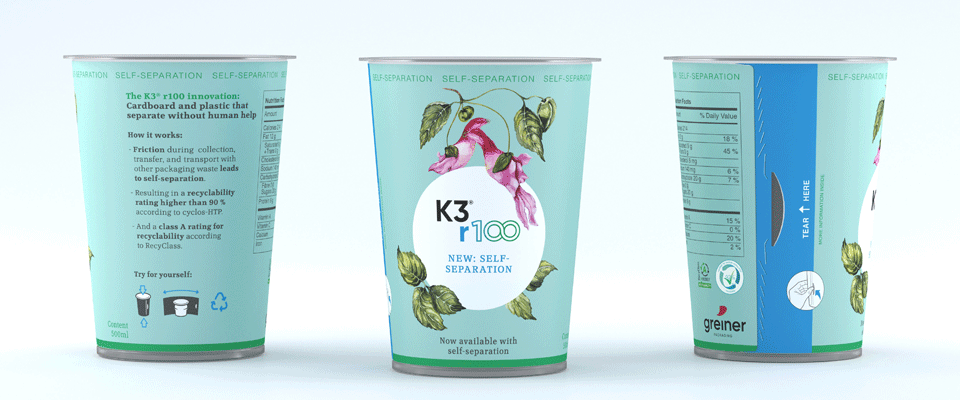Cardboard-plastic combinations have a number of positive attributes when it comes to sustainability. The cardboard wrap, which can be made from recycled material, lends sturdiness to the plastic cup so that it can be produced with particularly thin walls. This wrap is especially easy to detach from the cup thanks to an innovative tear-off system, with the two components then disposed of separately and recycled. Since the white or transparent plastic cup is unprinted, it can be recycled very effectively. In addition, the carbon footprint of K3® cups is significantly smaller than that of alternative packaging solutions. “Cardboard-plastic combinations are a fully sustainable solution,” emphasizes Jens Krause, sales director and K3® product category manager at Greiner Packaging. “But there is one challenge – separating the cardboard wrap from the plastic cup currently requires action by consumers. If they separate the cardboard wrap from the plastic cup when discarding the used packaging, the cup will perform very well in the recycling process. But if they don’t do that – which is still the case for most consumers – the components will not always be correctly identified in the sorting system, making it difficult to correctly recycle the K3® packaging. As a result, the cups are currently quite difficult to recycle properly in some countries.
Innovative solution for maximum recyclability: K3® r100
Greiner Packaging wants to address this state of affairs – and is now introducing a packaging product like no other. In developing K3® r100, the packaging specialists have created a solution in which the cardboard wrap separates itself from the plastic cup during the waste collection process – i.e., before the packaging arrives at the NIR (near infrared) detection in the sorting unit. This innovative development makes K3® cups substantially easier to recycle, with the cardboard and plastic assigned to the correct material streams during the initial sorting process before being recycled.









